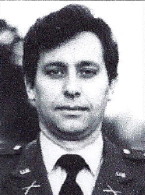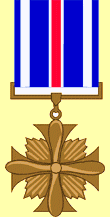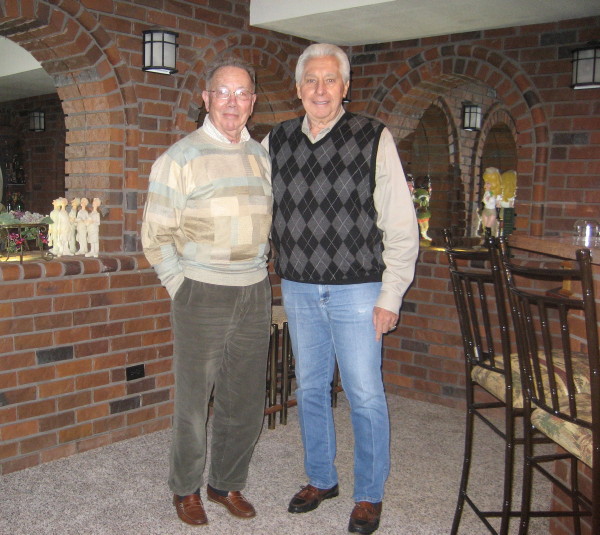A Ten-Minute Lesson Enables A Marine
To Save His Own Life By Landing Plane
by Gene Wilson, Catkiller Historian,
as related to him by Larry Deibert
4 December 1967—a very emotional day in the 220th in northern I Corps:



Major Gary Clark, the 220th Company Commander, had requested that Captain Larry Deibert, the 4th Platoon Commander, take the visiting 223rd Aviation Battalion commander for a look–see tour of the DMZ area of operations. On 4 December 1967, with the battalion CO in the front seat, Larry provided an orientation and then asked if he would like to make a simulated rocket run and fire a couple of rockets into North Vietnam. “Certainly—why not!” As they watched the bursts on the ground on the north side of the DMZ, they heard the “Mayday” call over the radio. “This is Persevere Mike,” Captain Charles Ramsay, the Marine observer, said calmly; “My pilot’s been hit. Looks dead. I can’t fly. What do I do?”
Captain Deibert stiffened. His heart skipped a couple of beats—but he retained his calm. He learned that Persevere Mike was about a half mile southwest of Quang Tri, 800 feet above the ground and in dubious control of the aircraft. Quickly sighting the wobbling Birddog, Captain Deibert quickly flew toward the aircraft, latched onto his wing and started talking. “Take it easy. We’ll get you down,” he declared—feeling that this might be far from possible.
Captain Ramsay had no intention of using his parachute. He was too low to jump and probably would have had trouble getting out of the aircraft anyway. Besides, he was not going to leave his pilot who might still be alive.
Captain Deibert soon learned and was surprised that Captain Ramsay said that he had never touched the controls of an aircraft. In fact, he did not have the rear cockpit control stick inserted in its socket on the floor—he did not even know where it was. When the pilot was hit and fell forward during a dive toward an enemy position, Captain Ramsay had reacted by intuition and reflex, grabbing the shoulder harness and pulling him off the control stick. This had permitted the aircraft to pull itself out of the dive.
Although he had never touched the trim tab controls before and didn’t even realize that he knew what the wheel on the left side of the cockpit was for, Captain Ramsay had used the trim tab to pull the nose up even further. Captain Deibert then told him where to locate the stick for the rear cockpit, to insert it in the slot on the floor, and how to activate the rudder pedals which were stowed away flat on the floor.
Now what? “I just gave him a ten-minute flying lesson,” Captain Deibert said. “Then I had him make a slow turn toward the Quang Tri airfield.”
Captain Deibert then called the crash crew at Quang Tri and two H–34 helicopters quickly came up to follow the Birddog to its touchdown and be ready to pick up the pieces and rush the pilot to the hospital. “Then I had him make a trial traffic pattern while I flew on his right wing. I talked him through the process of throttling back, lowering flaps, more flaps, lowering the nose and descending slowly. I never saw a guy quicker to learn. He was a lot cooler than I was.”
“So I brought him around the second time and talked him right down to touchdown—almost a perfect touchdown—then he started to porpoise,” Captain Deibert said. “I had explained that once he hit the ground, he was to cut the throttle completely and bring the stick clear back into his stomach and hold it there.” I also told him that he might expect a ground loop—but he could walk away from it. However, when he pulled the stick back, he pulled it right out of the socket. I had forgotten to tell him to make sure that he put in the locking pin.”
“Even so, the 10–minute pilot walked away without a scratch after ground–looping the aircraft. Right after we completed the experience, we exchanged a few words—but the Birddog, too, escaped with only a crumpled aileron and a bent prop. Unfortunately, the pilot was a casualty loss that day.”
“When it was all over, I was wringing wet from the tension, but Captain Ramsay was as cool as the traditional Marine,” Captain Deibert said. “Then I got the shakes.” Later, Captain Ramsay was awarded a Distinguished Flying Cross.
The historian (left) and the timely airborne flight instructor, in a recent photograph:

Editor's Note: On 21 January 1968, Captain Ramsay was lost with another 220th pilot on a mission in the DMZ area. Both were MIA until their remains were later recovered and returned for burial in Arlington National Cemetery. Remains were returned to USA on 1 January 1998 and identified on 19 July 2001.
Being a very modest man, who prefers anonymity, Captain Charles Larry Deibert would not personally promote this statement, so this is merely to highlight a few facts for the reader: He earned our nation’s second highest award, the Distinguished Service Cross, on 10 September, 1967, nearly three months before the assistwith Captain Ramsay. Captain Deibert also received two additional awards of the Distinguished Flying Cross, for action again an enemy force—the first during April, 1967, and the second during October, 1967. Captain Deibert has the distinction of being the highest decorated combat pilot from the 220th Aviation Company.






